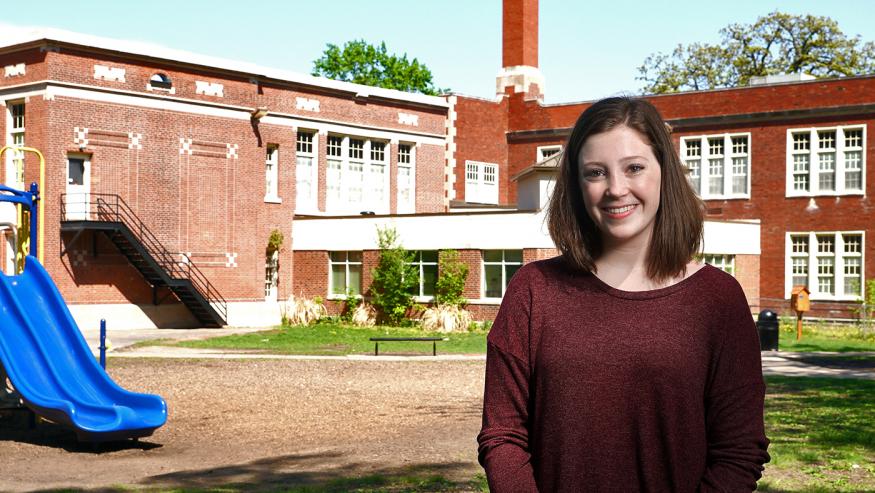
Senior Inquiry is good for you
When I was a first-year student, I knew I wanted to develop my writing and eventually use that skill in a career. I also knew that majoring in communication studies would help me get there.
But what I’ve only just discovered is how a journey like Augustana can shape, refine and strengthen professional goals.
Augustana was the perfect fit for two reasons: it endorsed academic exploration, and it offered close advising that aligned my personal values with graduation requirements. For example, I never thought I would have the chance to investigate a focused area of interest during undergrad, let alone complete 85 hours of volunteer service through a six-month Senior Inquiry project.
But what I’ve only just discovered is how a journey like Augustana can shape, refine and strengthen professional goals.
Senior Inquiry utilizes students’ cumulative liberal arts learning in a specific area of study to produce an original creative or scholarly work. These projects can be valuable tools during the job search or grad school application process. And although each academic department has its own guidelines, students pursue a topic of their choosing.
The communication studies department offers three Senior Inquiry options to its majors: 1) a traditional research proposal and execution, 2) a reflective analysis of multi-dimensional learning experiences at Augustana, or 3) a civic engagement project to address a contemporary problem by volunteering with a local organization.
I took the civic engagement path. I built an original “action plan” from the ground up, matching my interests in education and intercultural communication to meet the needs of English language learners (ELLs) at one of Augustana’s community partnerships just down the street—Longfellow Liberal Arts Elementary School.
What I did, and what I discovered
From September to February of my senior year, I spent a couple of hours, four days per week, assisting in Berni Carmack’s kindergarten classroom. Many students spoke a language other than English at home, primarily Spanish and Chin.
During this time, I focused on the ELL children, helping them identify story elements, recognize letter sounds, draw those letters properly and begin to read. I also created an interactive literacy game and implemented it at Family Reading Night in November. This shared classroom material with parents while providing a fun way for them to continue the lesson at home.
Before my project, I had little knowledge of the kindergarten classroom and, of course, these particular students. But it was extremely rewarding to interact with the children in their daily environment, participate in their school routine and witness their accomplishments. Some ELL students, who previously “checked out” in phonics and reading lessons, became regular participants, better able to recognize and reproduce letter sounds. Others learned to work more independently.
I felt a strong sense of purpose at Longfellow, and this internal reward, accompanied by visible student growth, fueled my commitment as a volunteer, mentor and researcher.
The children expanded my outlook on learning, traditional assessment methods and teaching strategies. They also reinforced my personal values. I felt a strong sense of purpose at Longfellow, and this internal reward, accompanied by visible student growth, fueled my commitment as a volunteer, mentor and researcher.
I learned that not only an understanding, but also an appreciation, of the home cultures represented in a classroom are deeply important for student success. That cultural appreciation will factor greatly into children’s long-term academic achievement and their future employment opportunities.
As for my own career, I hope to apply this awareness and liberal arts experience from Augustana to a communication role in the education field. My ultimate goal is to become a school public relations officer. Until then, I am seeking opportunities that will help me expand my professional skillset and serve a mission that I believe in.
